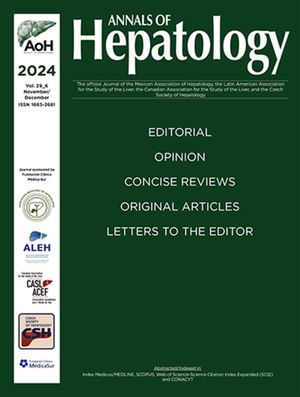
Abstracts of the 2023 Annual Meeting of the ALEH
Más datosYes, Full disclosures sent separately.
Introduction and ObjectivesSeladelpar reduces biochemical markers of cholestasis and pruritus in patients with primary biliary cholangitis. ASSURE (NCT03301506) is an ongoing, open-label, long-term Phase 3 trial of seladelpar in patients rolling over from Phase 3 RESPONSE (NCT04620733) or legacy studies (NCT03602560, NCT02955602, NCT03301506, and NCT04950764). We report interim 2-year efficacy and safety results.
Patients / Materials and MethodsPatients with insufficient response/intolerance to ursodeoxycholic acid could enroll in ASSURE. Key endpoints were composite biochemical response (alkaline phosphatase [ALP] <1.67 × upper limit of normal [ULN], ALP decrease ≥15%, and total bilirubin ≤ULN) and ALP normalization. Pruritus was measured using numerical rating scale (NRS; 0–10). For patients enrolling from RESPONSE, baseline was entry to RESPONSE and analyzed as continuous seladelpar or crossover from placebo; legacy patients were analyzed separately with baseline defined as entry to ASSURE.
Results and DiscussionAs of 01/2024, 158 RESPONSE and 179 legacy patients received seladelpar 10 mg daily for up to 155 weeks. In RESPONSE, 61.7% of patients met the endpoint at 12 months (M) vs 20% for placebo. In ASSURE, 61.8% (6M) and 72.4% (12M) met the composite endpoint; 75% (6M) and 93.8% (12M) of placebo crossover patients met the endpoint. In RESPONSE, ALP normalized in 25% of seladelpar and 0 placebo patients at 12M. With continued treatment, 33.3% (6M) and 17.2% (12M) had ALP normalization; 26.9% (6M) and 50% (12M) of crossover patients had ALP normalization. In ASSURE, 6-month change from baseline in pruritus NRS was similar to RESPONSE: −3.8 and −3.7 in continuous and crossover patients, respectively. At 12M and 24M, 73.2% and 69.7% of legacy patients met the endpoint in ASSURE; 42.1% and 42.4% achieved ALP normalization, and reduction in pruritus NRS was −3.8 and −3.1, respectively. There were no treatment-related serious adverse events.
ConclusionsSeladelpar treatment led to improvements in biochemical markers and pruritus, and was well tolerated with long-term use.









